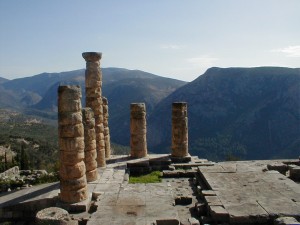
Words & Images. Signs & Symbols. Archetypes & Instincts. Myths & Rituals. Inner Lives & Outer Worlds.
Even coming up with an opening line for this first blog is fraught with problems – problems that any honest discussion of mythology cannot avoid. Are the above groupings strict dualisms? Is it even possible to define the above terms in a manner that can be agreed upon? And why did I feel compelled to change “inner life” and “outer world” which I had typed originally to their above plural forms?! (For scholars of myth does this mean I am less Campbellian and more Segalian, less modernist / Romantic and more post-modern in outlook?) And who the heck are Joseph Campbell and Robert Segal?
These and many other questions arise in the field of myth studies. This blog will address some of them and will answer few, as it so often seems that each attempt at an answer brings with it still more questions. Perhaps ultimately it is the quest in questioning that should and does occupy us the most. Perhaps it is the searching for meaning that truly is the meaning sought.
Though also not problem-free, these last two statements do suggest a certain existence and expenditure of energies, a certain degree of awareness, and, finally, a belief in and pursuit of this enigmatic thing called “meaning.” Additionally, in “quest” and “search” (and, perhaps now questioning and searching) we see and feel something at work in the very words themselves – emotions, desires, aspirations, and inspirations.
This blog argues that myth is not dead. (It may be undergoing a very slow death and rebirth transformation, but it is not dead in the sense that it was once and never again shall be.) The energies that inspired myth in past millennia are still within each and everyone of us. In fact it has been argued that the field of depth psychology as chiefly developed by Sigmund Freud and C.G. Jung emerged in the past century and a half because the psychodynamic energies previously expressed outwardly in a cohesive, coherent myth have retreated inward and become – among other things – neuroses, fantasies, dreams and art. As Jung provocatively stated, Zeus now resides not on Mt. Olympus but in the solar plexus of each and every man and woman.
Nevertheless, a depth psychological approach to life does still find mythic resonances existing in the outer world even if they aren’t as socially binding as was once the case. Words, images, buildings, place names, people (i.e. rock stars, Marines, the Pope, etc.), events and more capture our attention – that is attract our psychic energies and give some if not all of us (and some if not all of the time) an experience of meaning and of being alive. Maybe even an experience of awe and mystery – the latter of which is etymologically connected to the word “myth.” Experiences, finally, that make one’s mouth drop open and utter “Oh God…”
Mythfire blogs its way toward a greater appreciation of these energies, these psychic fires which make themselves known in one way or another. It is my hope that each blog entry in short order makes an observation about the manner in which myth has operated in the past and/or how myth still is at work today even if on a smaller, more fragmented level. Perhaps it is best if we next consider a preliminary definition of myth…
——–

